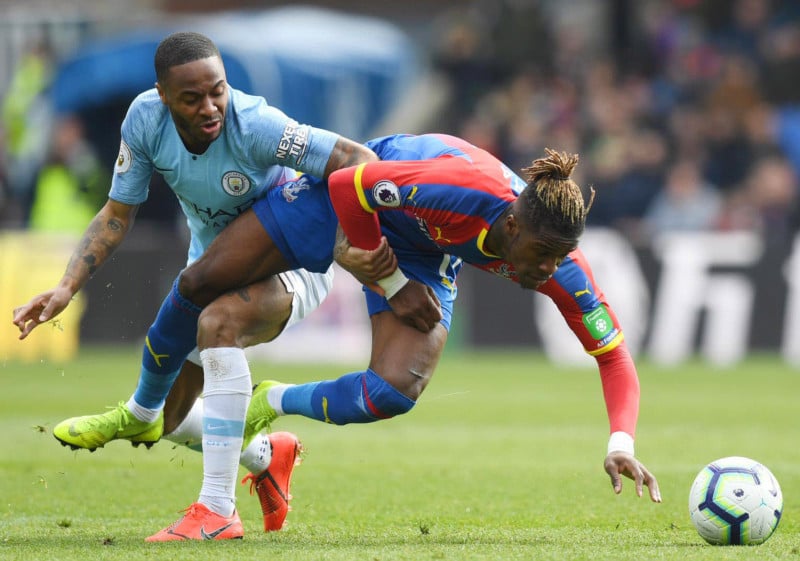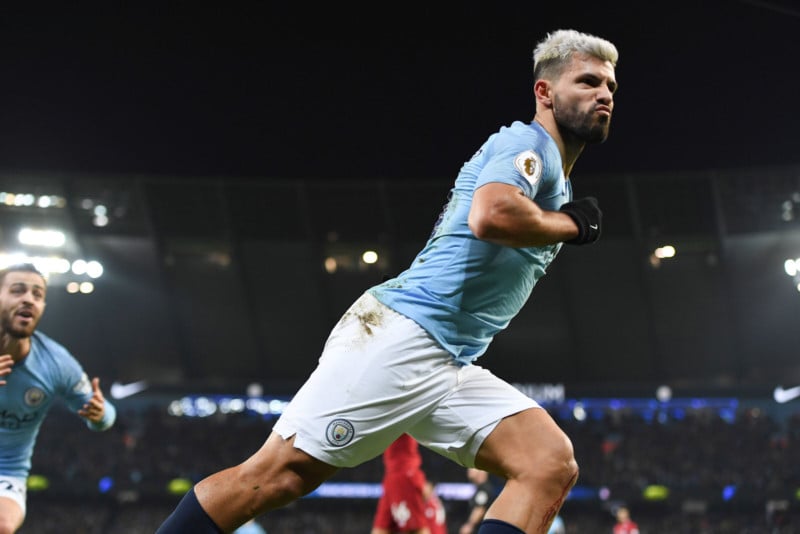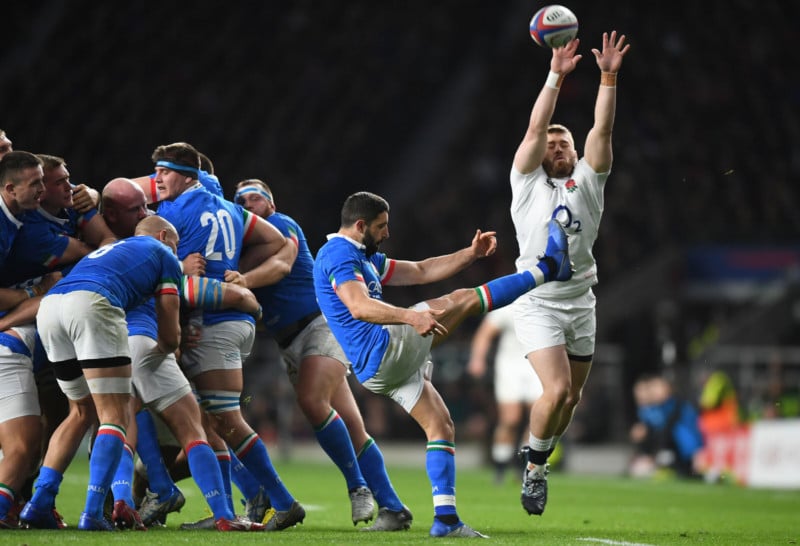How To Capture Award-Winning Sports Photos
![]()
As a newspaper staff photographer for 26 years, I’ve seen enormous changes in our industry over that time. There’s been an explosion of interest in sport and sports coverage, so there’s never been a dull moment in all those years.

But I’d say the most special moment for me was this year’s Cricket World Cup in London, with England v New Zealand. What made it extraordinary was the tie-breaker with an extra over each at the end of the game, which England won. It was so dramatic and unexpected. Cricket is one of my least favorite sports, but that heart-in-your-mouth ending was gripping.



Being a sports photographer was my aim after studying at Salisbury Art College, and I always wanted to work for a newspaper. There was no Instagram or blogging then, so I got my start as a freelancer for water sport and biking magazines. I followed my favorite photographers like Chris Smith, Chris Cole, Tony Henshaw, and Joe Mann by watching their work in the newspapers.
It was difficult starting out because the papers only wanted experienced photographers. Finally I got a few shifts on the Daily Telegraph, then the Mail on Sunday. The Daily Mail then asked me to do a two-week trial for a staff job. It went like a dream, and the rest is history. Since then, I’ve won Sports Photographer Of The Year six times.

There’s no typical day for me as a sports photographer because every day is different, but some things never change. First up I’ll organize my gear, charge my batteries, clear my hard drives, and then drive to wherever the match is happening. I’ll prep my gear again, write some captions, and send test images through to the picture desk. I’ll shoot the game and send my images on the hoof for the website. Then I’ll re-edit my shots for the paper after the match. Hopefully, I’ll get to stay dry, but it doesn’t always work out that way.

I shoot all sports, but generally my home turf work tends to be focused around Premiership football [AKA soccer], which then goes worldwide with the Premier League. I’ll also cover horse-racing and cricket, plus the big sporting tournaments like Wimbledon tennis and The Open golf. It’s the English season. Every year it’s the same. I’d say half of my work is live-action sports and the rest is one-to-one features.
Football is my preferred sport to shoot because there’s always going to be a picture from a football match. By that I mean you’re guaranteed to get some great pictures from football because it’s rare to come away from a game with nothing. There’s always a talking point or a controversy in football.

Diving, cricket, sailing, swimming and Formula One all used to be technically challenging, but the new breed of longer and faster lenses – along with faster AF – have made them technically easier to photograph. You still need a creative eye to get the best picture, but technology is improving our chances.
While every sport is different, lighting is the challenge in all of them that we face before we can even frame up a shot. So much of our work is in stadiums with artificial lighting. It’s improving, but it’s still a challenge because you want the brightest and most crisp and colorful images you can get.
If I had to rank all our challenges as sports photographers, I’d say lighting’s the biggest one, followed by arena backgrounds, then shooting positions. Usually there are only certain positions available, so you want to try for the best one or you’ll end up with no choice but to work with the one you’ve got.

TV cameras always get in our way, making our room for maneuver even more limited. On a practical level, there are the unsociable hours, carrying heavy and bulky equipment, and keeping our very expensive kit dry. We really do love our equipment and always want the latest kit, along with exactly the right bag to carry it in.
Then there’s the competition to get the money shot. You can wait all day for a split second or for something to happen. In tennis, you can photograph volleys, backhands, and forehands all day long, but you really want something like a dive that makes that game unique.

The picture that encapsulates a game may only last for a second out of a whole match. It’s the speed and continuous shooting that helps you to freeze that moment of action or emotion. You need a dependable camera to do that.
In sports, unlike commercial photography or portraits, we’ve only got one shot at it. And that bit of action may only last for a second, so being able to rely on getting a quality image is paramount. If you’re competing with thousands of images all piling in, you’ve got to make sure yours are top quality. You have to shoot with the best gear, you can’t lag behind.

By contrast, if you’re shooting a portrait, you’ll have time to manipulate the image afterwards — or maybe you won’t have to, because you’re not competing with so many thousands of images, and what you’ve taken is unique. But in sports we’re working in direct competition.
There’s no other form of photography where you compete as much as sports. News is competitive too, but the volume in sports is higher. The picture editor is going to see around 10,000 images a day – and 5,000 through the desk on a major sporting event – so when shots are pouring in from hundreds of photographers, your pictures have to compete with everyone else. Your image is going to appear on a screen at the desk and if it’s slightly better, they’ll use the best quality image. You have to have that edge. It’s very competitive.
Workflow is a big thing for everyone now. The value of a picture is in the speed because the monetary value of it changes. The quicker you can get it out, the more it can be worth. Captioning is essential, so the picture desk can identify the action.

I shoot with the Nikon D5, which has touchscreen captioning, so that speeds up the workflow. Then being able to send images directly to the desk from the camera with Wi-Fi means I can compete with all the other agencies. That’s a huge advantage for a website. On the desk, they’ll clock the pictures in and the first one they get will be the one they’ll use. For a news website competing with other news websites, the speed of how you get pictures in and pages up is a fantastic edge. It all comes down to seconds.
Mail Online is one of the world’s biggest news websites, so there are rolling deadlines. If I have a picture in ten seconds after someone else, they’ll use someone else’s. I want my picture in, so I do everything I can to improve it quickly and get it straight to them. I’ll make simple edits with the cropping and D-Lighting tools in the D5. I end up doing that quite a lot, because of the limited shooting positions on sports events. And sometimes the action is quite a long way away, so I’ll need to crop into the shot.

Here are some of my tips for capturing award-winning sports images:
1. Work Around Arena Lighting
Not all stadium light is even, so take the time to look around and scout out an area that has brighter light. There’s quite a lot of drop-from in light to the sides of the stadium, so if you’re shooting towards the goal mouth, it’s quite often brighter. Sometimes the floodlights can be stronger on one side of the pitch, so it makes sense to shoot with the light rather than backlit, unless you’re after that effect. Older stadiums tend to have the worst light. I get around this by using the fastest lenses and a camera with powerful low-light performance.

2. Find The Right Shooting Position
This is the age-old problem that we all have! The best sports pictures not only have great action in them, but they also have clean backgrounds. Getting a clear background is key for an impactful image. Even small adjustments in your seating position – moving two or three feet to the left or right – can make a massive difference. It’s the reason why we all queue up hours before an event starts, to be in the stadium early to get the best position possible. Once you’ve found your position, quite often it will be fixed for the entire game – under UEFA rules for instance – so you can spend a lot of time agonizing over finding the perfect position.

3. Stay Alert To Get The Shot
You need to know your sport and anticipate what’s going to happen next. Sportsmen and sportswomen run and shoot and jump in different ways. Do they shoot with their left or right foot? Will they cross the ball or cut inside and shoot? Knowing these details will help you to read the game and be ready to shoot that split second of action.
We used to time our shots carefully, but now with these super-fast cameras, it’s really a question of keeping the shutter pressed and picking out the best image afterwards. That may sound easy, but it’s still experience that counts when deciding how tight to shoot and how bold the image should be. It goes without saying that you have to be lightning-quick with your reflexes and be able to concentrate ALL of the time. Even if it seems like nothing is happening in the game, ‘off the ball’ moments can come out of nowhere and you need to be ready. It’s easy to relax or get distracted and miss the own-goal or foul.

4. Choose Your Kit Carefully
I’ve been using the D5 for years and it’s a proper workhorse that’s capable of everything a pro sports photographer needs. It’s cutting-edge for producing quality images in poor lighting. The two main sports photography lenses I work with are the AF-S NIKKOR 400mm f/2.8E FL ED VR and AF-S NIKKOR 70-200mm f/2.8E FL ED VR. Obviously I need a lot more than this, but they are the two essentials. The 400mm is for long shots and action, to bring your subject closer to you on a football pitch, for example. The 70-200mm is the goal mouth lens for close action. These lenses are still fast enough to use under floodlit conditions.

5. Connect With Your Subject
These days, sportsmen and sportswomen have so little time available to be photographed, and getting an ‘in’ with a known figure is extremely difficult. Even if you manage to get a one-on-one with a top player, as much as 13 or 14 of the 15 minutes allocated for your paper might be taken up by the reporter doing the interview.
Sometimes you may get as little as one to two minutes with a player. When that happens – and it happens a lot – you have to be very clear about what you want, as every second counts. You need a good idea, you need to convince the player to do it, and then you need a backup plan in case they don’t agree.
It can be hugely stressful if you’ve flown a long way to shoot a big player, but you only get a few minutes to do your work. There are usually gatekeepers hovering around too, who are quick to jump in if they think the player has had enough.

I’ve been on shoots where the star turns up late and in a bad mood, then the PR turns to you and tells you that your planned two-hour shoot is now only a few minutes, so would you please just get something and go. Your expectations may drop like a stone, but you can’t let your disappointment show. You just have to adapt and continue.
And then there are the times you get lucky. I went to shoot Anthony Joshua for a quick portrait, but it ended up being two hours where he was happy to do anything I asked for, with no-one interfering or calling time on our session. I got some amazing pictures, but that kind of access is much more unlikely now he’s become such a big name.
About the author: Andy Hooper is the Chief Sports Photographer for The Daily Mail. The opinions expressed in this article are solely those of the author. You can find more of his work on his website.